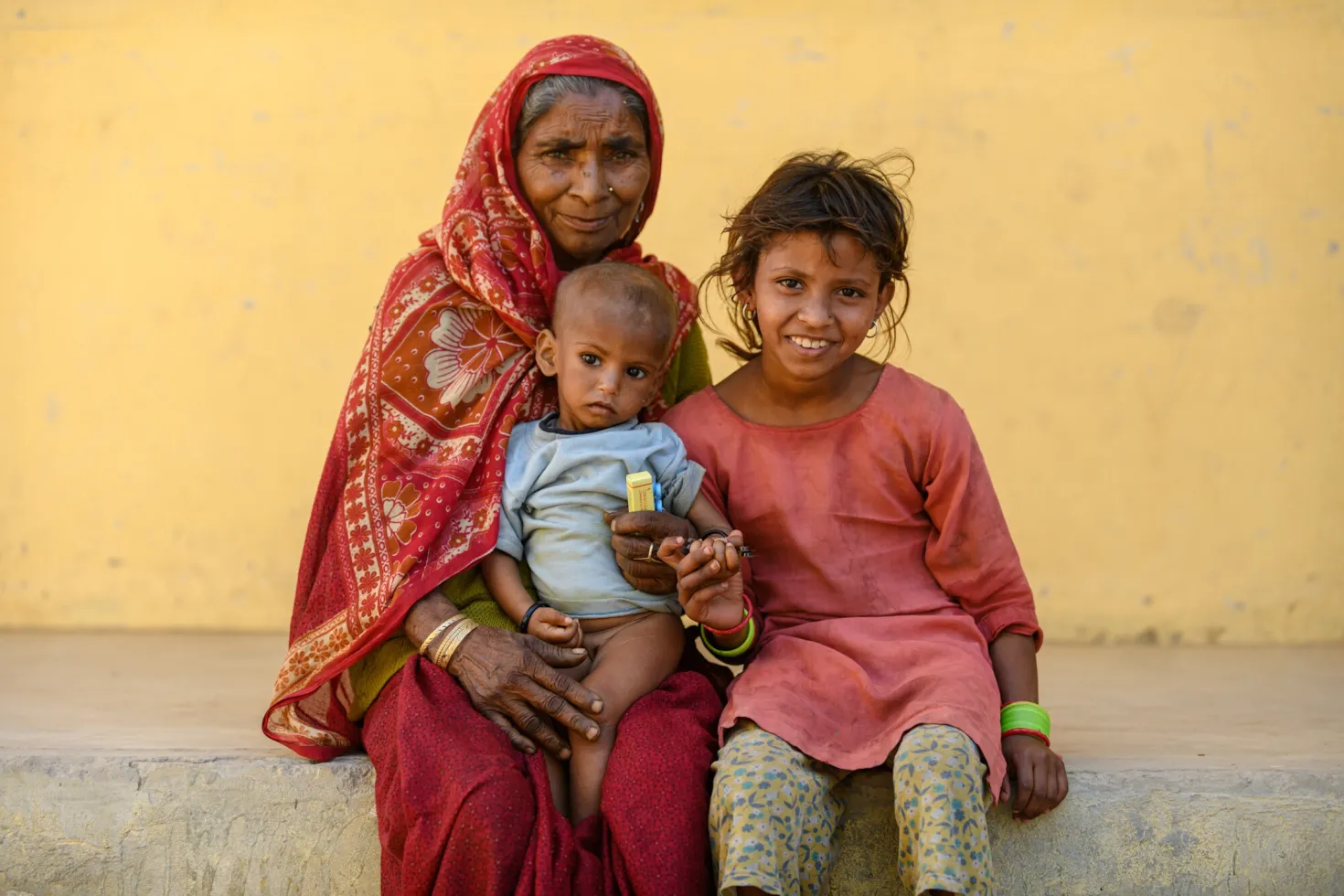New data tool supports countries with their cervical cancer elimination efforts
A new global planning tool offers countries a practical way to translate cervical cancer elimination targets into effective action, backed by national data and long-term projections.

Over a million girls turn out for Nepal's first HPV vaccine campaign, supported by Gavi, the Vaccine Alliance. HPV, or human papillomavirus, causes most cervical cancer. A comprehensive vaccine programme significantly contributes to eliminating the disease.
HIGHLIGHTS
- Developed by IARC and the University of Sydney, with funding from Cancer Research UK, the Elimination Planning Tool (EPT) enables countries to simulate outcomes and evaluate cervical cancer intervention strategies tailored to national settings.
- The tool supports low- and lower-middle-income countries in aligning with WHO’s 90-70-90 targets for elimination, offering projections to guide effective resource allocation.
- IARC estimates that around 12.5 million lives are already on course to be saved as a result of current efforts, with full implementation of the WHO Global Strategy potentially protecting up to 62 million this century.
- The EPT complements and supports ongoing efforts by the Elimination Partnership in the Indo-Pacific for Cervical Cancer (EPICC) initiative, which supports elimination efforts across the Indo-Pacific region, and to which UICC is a contributing partner.
A new modelling tool launched this week in Lyon is designed to help low- and lower-middle-income countries plan and optimise their efforts to eliminate cervical cancer.
Co-developed by teams from the International Agency for Research on Cancer (IARC) and the University of Sydney, with funding from Cancer Research UK, a UICC member organisation, the Elimination Planning Tool (EPT) uses national data to model the impact of different strategies and identify the most effective ways to allocate resources – supporting both immediate decisions and long-term planning for prevention and treatment.
Dr Isabelle Soerjomataram, Deputy Branch Head of Cancer Surveillance at IARC who leads the team that co-developed the EPT, said that the power of the EPT builds on the foundation of the original modelling that informed WHO’s 2020 strategy and the setting of the ‘90-70-90’ targets for 2030: 90% of girl aged 9-15 years should be vaccinated, 70% of women should be screened at least twice in a lifetime with an HPV test, and 90% of women that require access to treatment of precancer or for invasive cervical cancer, can access it.
Although cervical cancer is largely preventable and highly treatable when detected early, it remains a major cause of cancer death in many low-income countries. The tool is designed to help health ministries set priorities, track progress, and make more strategic use of available resources.
IARC estimates that around 12.5 million lives are already on course to be saved as a result of current actions, rising to 62 million by the end of the century if global elimination targets, laid out by the World Health Organization (WHO) in its Global Strategy, were to be achieved by all countries by 2030.
These figures are based on modelled projections in 78 low- and lower-middle-income countries (LMICs), where 94% of cervical cancer deaths occurred in 2022.
“How quickly we get there and how many lives we save along the way will be spurred on by new evidence – not on the vaccination, screening and treatment technologies, which are well established – but on their optimal implementation in each low- and lower-middle-income country.”
–Dr Soerjomataram, Deputy Branch Head of Cancer Surveillance, IARC
Dr Elisabete Weiderpass, Director of IARC, emphasised that up-to-date evidence and its effective use in delivering quality services are crucial to speeding up the elimination of cervical cancer. “The evidence underpinning the ambition to eliminate cervical cancer globally is now five years old. The EPT allows critical benchmarking of achievements so far, and securing of renewed political commitment to sustaining these services that move us to the goal of saving more than 62 million lives over the century,” she said.
The launch marks a shift toward integrating elimination strategies into national cancer control plans using local data.
Prof. Karen Canfell AC, who leads the University of Sydney team that co-developed the EPT, said the tool is already helping countries in the Indo-Pacific region design and launch cervical cancer elimination programmes. These efforts are supported through the Elimination Partnership in the Indo-Pacific for Cervical Cancer (EPICC) initiative, led by the University of Sydney and funded by the Australian Government and the Minderoo Foundation.
“The idea of eliminating the disease can be a daunting conceptual step. However, with the EPT, which enables modelling using localised disease outcomes in relation to interventions, countries can map out a path to elimination that is evidence-based, feasible and sustainable for their specific circumstances and enables them to track progress towards interim and long-term goals.”
– Prof. Karen Canfell AC, Professor & NHMRC Leadership Fellow, Faculty of Medicine and Health, The University of Sydney
Cary Adams, CEO of UICC, joined partners at the launch event in Lyon, held as part of the IARC Governing Council.
“The EPT is a practical and timely resource, which offers practical guidance to countries that are looking to make informed decisions about how to scale up cervical cancer services. It helps clarify what’s possible within national contexts and supports health ministries to focus resources where they can have the greatest impact.”
– Cary Adams, CEO, UICC
UICC is actively supporting its members in implementing cervical cancer elimination strategies, including as part of EPICC by providing expertise, networks, and tailored support to civil society organisations in the region through its Cancer Advocates programme. This collaboration aims to strengthen national advocacy for cervical cancer elimination, with a special focus on improving access to treatment and palliative care, and helping to ensure the sustainability of efforts to scale cervical cancer services n participating countries.
Last update
Wednesday 07 May 2025
